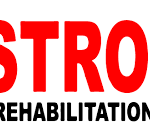Introduction
Stroke is one of the leading causes of disability worldwide, affecting millions of people each year. It occurs when blood flow to a part of the brain is interrupted or reduced, depriving brain tissue of oxygen and nutrients. The aftermath of a stroke can be devastating, leaving individuals with physical, cognitive, and emotional impairments that impact their daily lives. While medical intervention in the acute stage is critical for saving lives, long-term recovery largely depends on comprehensive rehabilitation.
This is where a Stroke Rehabilitation Centre plays a vital role. These centres are specialized facilities designed to help patients regain their independence, relearn essential skills, and improve their quality of life after a stroke. With a multidisciplinary approach involving physiotherapists, occupational therapists, speech-language pathologists, psychologists, and neurologists, stroke rehabilitation centres provide personalized care that addresses the unique challenges of each patient.
In this article, we will explore the importance of stroke rehabilitation, the therapies involved, the role of family support, and how these centres help patients rebuild their lives.
Importance of Stroke Rehabilitation
Rehabilitation after a stroke is not just about physical recovery—it is about restoring dignity, confidence, and self-reliance. Stroke survivors often face challenges such as paralysis on one side of the body (hemiplegia), difficulty speaking (aphasia), memory loss, emotional instability, and reduced mobility. Without proper rehabilitation, these impairments can become permanent, leading to a decline in mental health and overall well-being.
A stroke rehabilitation centre provides:
- Early intervention: Timely rehabilitation can prevent further complications such as muscle stiffness, joint contractures, and pressure sores.
- Holistic recovery: Centres focus on physical, emotional, social, and cognitive aspects of healing.
- Structured environment: Patients receive consistent therapy in a safe and supportive setting.
- Long-term support: Recovery from a stroke can take months or even years, and a dedicated centre ensures sustained care.
Services Offered at a Stroke Rehabilitation Centre
Stroke rehabilitation is never a “one-size-fits-all” process. Each patient’s condition, age, and recovery potential are different, which is why centres provide a tailored plan of care. The following therapies are usually part of a rehabilitation program:
1. Physiotherapy
Physical therapy helps restore movement, strength, and balance. Through exercises, mobility training, and the use of assistive devices like walkers or braces, patients can regain independence in walking and performing daily tasks.
2. Occupational Therapy
Occupational therapists assist patients in relearning everyday activities such as dressing, eating, cooking, and bathing. They may introduce adaptive techniques or tools that make tasks easier and safer.
3. Speech and Language Therapy
Many stroke survivors struggle with speaking, understanding, reading, or writing. Speech-language pathologists use specialized exercises to improve communication skills and, in some cases, teach alternative ways of expressing thoughts.
4. Cognitive and Memory Training
Cognitive impairments like poor attention span, memory loss, and problem-solving difficulties are addressed through mental exercises, games, and structured tasks.
5. Psychological and Emotional Support
Depression and anxiety are common after a stroke. Psychologists provide counseling and therapy to help patients cope with emotional changes and rebuild confidence.
6. Nutritional Guidance
Dietitians help stroke patients maintain a healthy diet that supports brain recovery, prevents further strokes, and enhances overall well-being.
7. Community Reintegration Programs
Centres often provide training that helps patients return to work, engage in social activities, and lead fulfilling lives.
Multidisciplinary Team Approach
The strength of a stroke rehabilitation centre lies in its team-based care. Specialists from different fields work together to develop a personalized recovery plan. The collaboration typically includes:
- Neurologists: Monitor brain recovery and prevent complications.
- Physiotherapists: Focus on motor skills, balance, and strength.
- Occupational therapists help patients adapt to everyday tasks.
- Speech therapists: Restore communication and swallowing abilities.
- Rehabilitation nurses: Provide daily care and ensure adherence to therapy.
- Psychologists/Counselors: Address emotional well-being.
- Social workers: Assist families with financial planning, resources, and community support.
This multidisciplinary approach ensures that no aspect of the patient’s recovery is overlooked.
The Role of Family in Stroke Rehabilitation
Family support is a cornerstone of successful stroke recovery. Rehabilitation centres often involve family members in therapy sessions, teaching them how to assist with exercises, provide emotional support, and encourage independence at home. Caregivers are also educated about lifestyle changes, medication management, and how to handle emergencies.
Moreover, families play a vital role in motivating the patient. Encouragement, patience, and a positive environment can significantly boost recovery outcomes.
Advanced Technologies in Stroke Rehabilitation Centres
Modern rehabilitation centres are equipped with advanced technologies that accelerate recovery:
- Robotics and Exoskeletons: These devices help patients practice walking and movement with support.
- Virtual Reality Therapy: Engages patients in interactive activities that stimulate both physical and cognitive functions.
- Electrical Stimulation: Used to activate weakened muscles and improve mobility.
- Computerized Cognitive Training Programs: Enhance memory and attention through digital exercises.
Such innovations make rehabilitation more effective and engaging, especially for patients who may feel discouraged.
Challenges in Stroke Rehabilitation
While stroke rehabilitation centres provide immense benefits, challenges still exist:
- Cost of treatment: Long-term rehabilitation can be expensive, making it difficult for many families to afford.
- Accessibility: In rural or underdeveloped areas, rehabilitation facilities may not be easily available.
- Patient compliance: Some patients may lose motivation, skip therapy, or struggle with emotional setbacks.
- Chronic disabilities: Not all patients regain full independence, and some may require lifelong support.
Despite these challenges, stroke rehabilitation remains crucial for maximizing recovery potential.
Conclusion
A stroke is a life-altering event, but it does not have to mean the end of independence or hope. With the help of a Stroke Rehabilitation Centre, patients can regain control over their lives, relearn essential skills, and rebuild their confidence. The journey is often long and demanding, but with structured therapy, advanced medical technology, professional expertise, and strong family support, recovery is achievable.
Stroke rehabilitation is not just about healing the body—it is about restoring the human spirit. These centres stand as a beacon of hope, guiding survivors towards a healthier, more independent, and dignified future.

